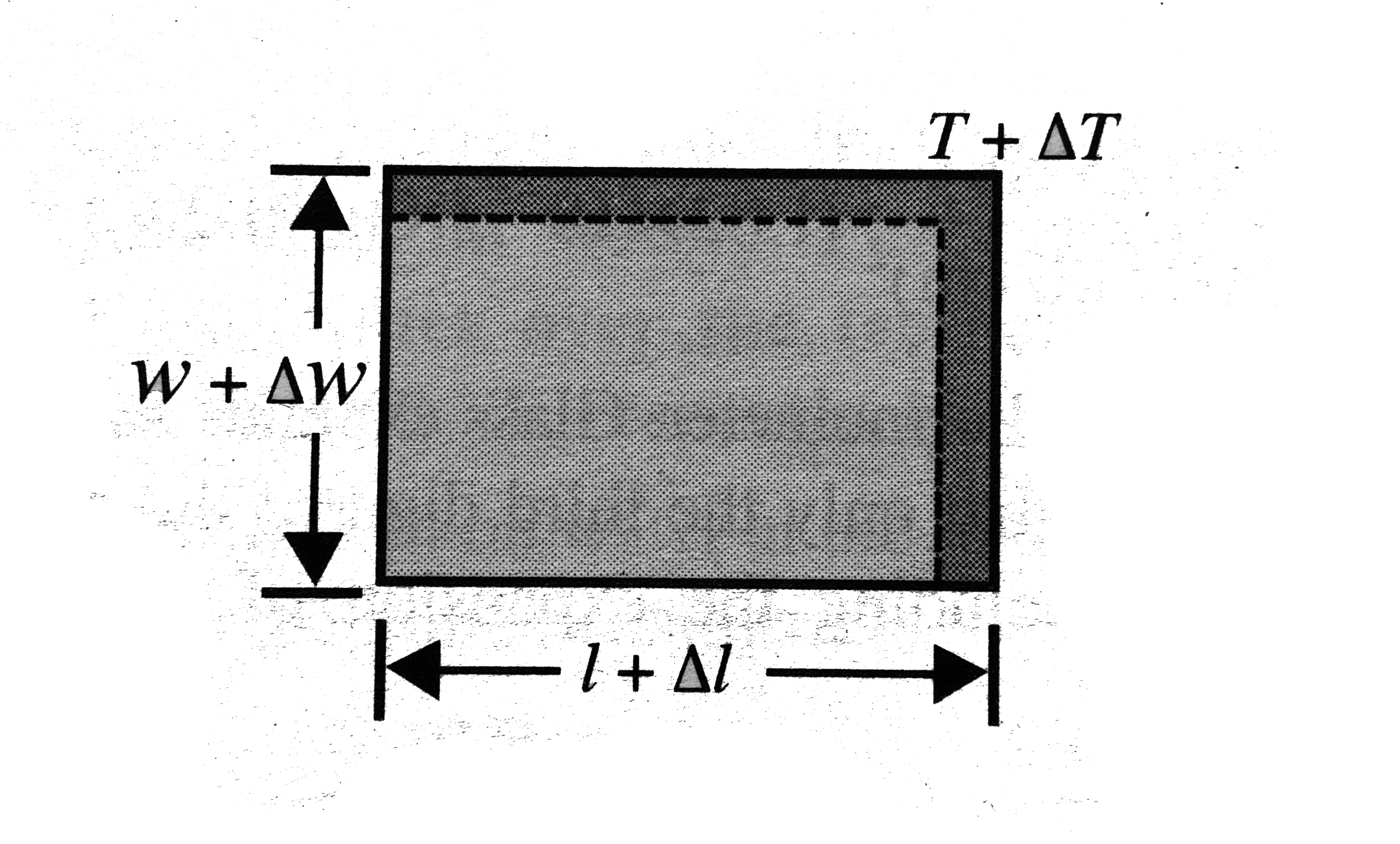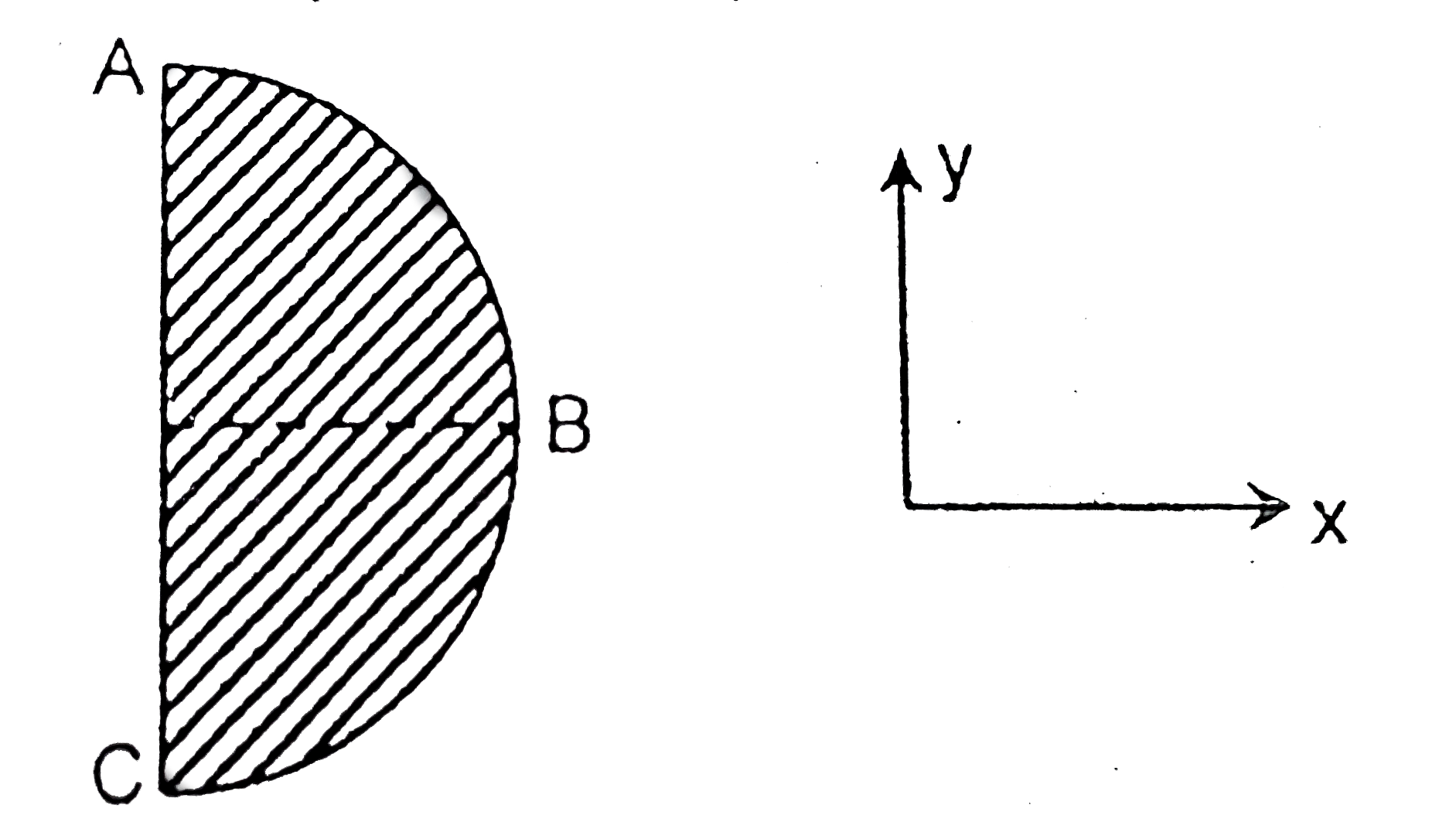
The rectangular plate shown if Fig. 1.7 has an area . If the temperature increases by , each dimension increases according to , where is the average coefficient of linear expansion. Show that the increase in area is . What approzimation does this expansion assume?

We expect the area to increase in thermal expansion. It is neat that the coefficent of area expansion is just twice the coefficient of linear expansion. We will use the definitions of coefficients of linear and area expansion.
From the diagram is Fig. 1.8, we see that the change in area is
Since and are each small quantities, the product will be very small as compared to the original or final area.
Therefore, we assume
Since and
We then have
Finally, since , we have
Topper's Solved these Questions
- BOOK - CENGAGE PHYSICS ENGLISHCHAPTER - CALORIMETRYEXERCISE - Exercise 1.123videos
CALORIMETRY
- BOOK - CENGAGE PHYSICS ENGLISHCHAPTER - CALORIMETRYEXERCISE - Exercise 1.222videos
CALORIMETRY
- BOOK - CENGAGE PHYSICS ENGLISHCHAPTER - BASIC MATHEMATICSEXERCISE - Exercise 2.620videos
BASIC MATHEMATICS
- BOOK - CENGAGE PHYSICS ENGLISHCHAPTER - CENTRE OF MASSEXERCISE - INTEGER_TYPE1videos
CENTRE OF MASS
Similar Questions
Show that moment of inertia of a solid body of any shape changes with temperature as I=I0(1+2αθ). Where I0 is the moment of inertia at 0∘C and α is the coefficient of linear expansion of the solid.
View SolutionImagine a hypothetical material whose average temperature coefficient of linear expansion is 0.1/.∘C .Find the fractional increase in area of thin square plate of above material when temperature is increase by 10∘C
View SolutionA thread of liquid is in a uniform capillary tube of length L. As measured by a ruler. The temperature of the tube and thread of liquid is raised by ΔT. If γ be the coefficient of volume expansion of the liquid and α be the coefficient of linear expansion of the material of the tube, then the increase ΔL in the length of the thread, again measured by the ruler will be
View SolutionA thread of liquid is in a uniform capillary tube of length L. As measured by a ruler. The temperature of the tube and thread of liquid is raised by ΔT. If γ be the coefficient of volume expansion of the liquid and α be the coefficient of linear expansion of the material of the tube, then the increase ΔL in the length of the thread, again measured by the ruler will be
View SolutionA semi circular disc of radius R is placed on a smooth horizontal surface. Figure shows top view of this. If temperature is increased by Δt then displacement of (coefficient of linear expansion is α):
 View Solution
View SolutionThe system shown is figure consists of 3 springs and two rods. If the temperature of the rod is increased by ΔT, then the total energy stored in three springs is β×99484kL2α2(ΔT)2. Determine the value of β. The spring are initially relaxed and there is no friction anywhere. For rod the coefficient of linear expansion is α
_E01_089_Q01.png) View Solution
View SolutionAn equilateral triangle ABC if formed by two Cu rods AB and BC and one Al rod

it is heated in such a way that temperature of each rod increases by ΔT. Find change in the angle ABC. [Coeff. Of linear expansion for Cu. is α1, Coeff. of linear expansion for Al is α2]View SolutionIn a vernier callipers the main scale and the vernier scale are made up different materials. When the room temperature increases by ΔT∘C, it is found the reading of the instrument remains the same. Earlier it was observed that the front edge of the wooden rod placed for measurement crossed the Nth main scale division and N + 2 MSD coincided with the 2nd VSD. Initially, 10 VSD coincided with 9MSD. If coefficient of linear expansion of the main scale is α1 and that of the vernier scale is α2 then what is the value of α1/α2 ? (Ignore the expansion of the rod on heating)
View SolutionA simple pendulum made of bob of mass m and a metallic wire of negligible mass has time period 2s at T=0∘C. If the temperature of the wire is increased and the corresponding change in its time period is plotted against its temperature, the resulting graph is a line of slope S. If the coefficient of linear expansion of metal is α then value of S is :
View SolutionA metal wire with volume density ρ and young's modulus Y is stretched between rigid supports. At temperature T, the speed of a transverse wave is found to be v1. When temperature decreases T−ΔT, the speed increases to v2. Datermine coefficient of linear expansion of wire.
View Solution

